Per prima cosa chi è o cos’è Fortuny? Per quelli che non lo sapessero Fortuny è un famoso brand di meravigliosi tessuti stampati nato all’inizio del ‘900 dalla geniale mente del suo fondatore: Mariano Fortuny (1871-1949), poliedrico artista, spagnolo di nascita ma veneziano di adozione, che espresse il suo talento in pittura, incisione, scenografia, scenotecnica e illuminotecnica, disegno, fotografia, design della moda e degli interni. Famose le lampade da lui progettate che sfruttano la luce indiretta, il brevetto del tessuto plissé, reso noto con il modello dell’abito Delphos, nonché la tuttora segreta tecnica di tintura e stampa dei suoi tessuti con motivi floreali, geometrici o esotici.
Museo Fortuny è parte del circuito museale di Venezia, palazzo Pesaro degli Orfei fu
costruito nel ‘400 e si deve proprio a Mariano Fortuny il suo recupero, quando ne fece la sua dimora nonché il suo studio-laboratorio, da qui
il nome attuale. I restauri sono stati di tipo conservativo e di rispristino:
visitandolo infatti si possono osservare numerosi elementi architettonici
originali come ad esempio le parti lignee del loggiato del cortile interno e la
travatura del tetto, alcune vetrate, e sui muri si può ancora leggere il lavoro
di rimozione delle pareti divisorie non originali. E’ aperto solo in occasione
di mostre temporanee, ma la cosa più interessante è il piano nobile del palazzo
dove sono conservati il mobilio originale e altri oggetti dell’artista. Quadri,
modellini, tessuti appesi come arazzi, lampade e la biblioteca che si intravede
dalla porta vetri (nella quale purtroppo non si può entrare). Merita una visita, il palazzo è meraviglioso, ma mi sarebbe piaciuto trovare più luce e più attenzione sui lavori di Fortuny.
In questo periodo fino a novembre è allestita la mostra Intuition, nelle foto vedrete alcune
delle opere in mostra ma la mia attenzione si è concentrata decisamente più su
dettagli del palazzo che mi hanno colpita. Per correttezza aggiungo che le
ultime quattro foto dove si vedono diverse angolazioni dello studio
dell’artista non sono mie provengono da altri siti o da libri e sono state fatte
durante altre esposizioni, le ho prese in prestito solo per darvi un idea;
avrei infatti voluto farne io ma purtroppo l’illuminazione era davvero scarsa…
in parte credo per un discorso di conservazione delle opere, in parte anche perchè
la mostra corrente ha un atmosfera volutamente cupa (almeno secondo me).
Now and until November there is the exhibition
named Intuition, in my pictures you
will see some of the artworks, but my attention was directed to building
details. To be honest I would
like to underline that the last four pictures regarding the studio are not
mine, I borrowed them from other sites or books only to show you a bit of that
space, they have been made during other exhibitions; I’ve tried to take some
pictures on my own in that space but it was too dark… I think lights were so
low to preserve artworks but also due to the current exhibition atmosphere (a
little bit gloomy in my opinion).
I spent last weekend in Venice, and I visited Fortuny Museum and Fortuny’s show room in Giudecca (for this check the next posts!).
First of all,
who is or what is Fortuny? For
those of you who don’t know Fortuny is a famous brand of wonderful hand printed
fabrics born at the beginning of ‘900s from the genius of its founder: Mariano
Fortuny (1871-1949), he was a multitasker artist, born in Spain but Venetian of
adoption. He showed his talent in painting, etching, stage-design,theatrical stage lighting, photography, and
interior and fashion design. Famous examples are its lamps with indirect
light, the plissé patent, started with the Delphos gown, and especially the
invention of his secret technique to dye and print textiles with floral,
geometric or exotic subjects.
Fortuny Museum is part of Venetian City Museums, originally named
Palazzo Pesaro degli Orfei, the building was built in the ‘400s and thanks to Mariano
Fortuny it has been restored, when it was transformed into his home and atelier. All works made of the
building focused on restoration and conservation: during the visit you can see
original architectural elements such as wood parts of the eave and the roof,
some stained glass windows, and on walls, you can see the signs of the
not-original partition walls that have been removed. The museum is open only
for temporary art exhibitions, but the most interesting thing is the main floor
where are exposed original furniture and objects of the artist. Paintings,
models, fabrics hanged as tapestry on the walls, lamps and the library,
unfortunately only visible through the glass door. I recommend the visit, the building is wonderful, but it should be better to give more light and attention to Fortuny's works.

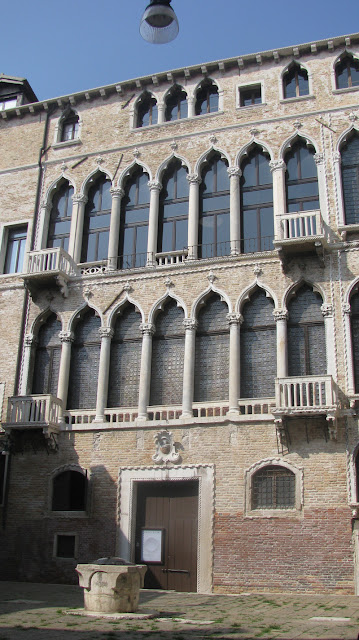





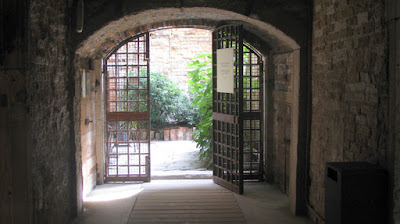

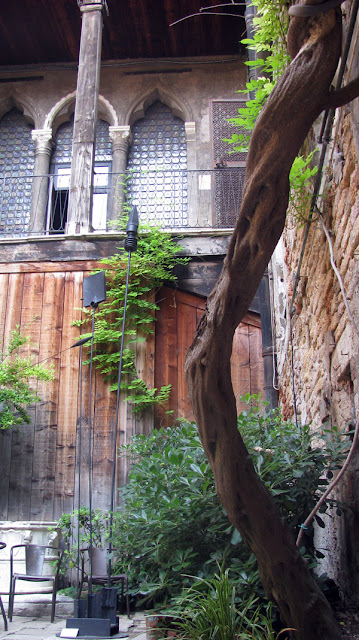

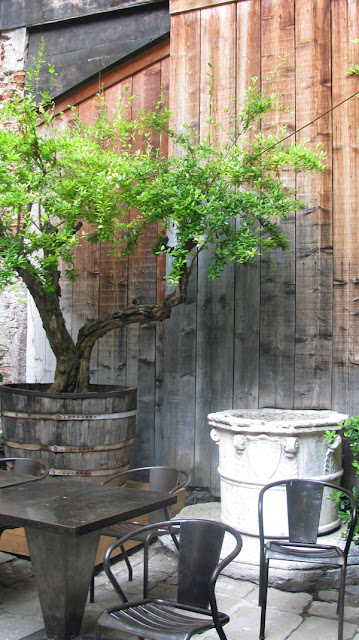
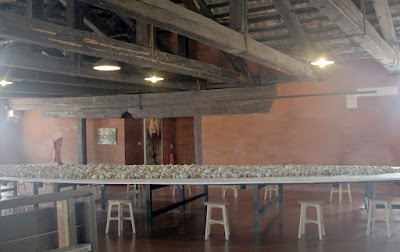



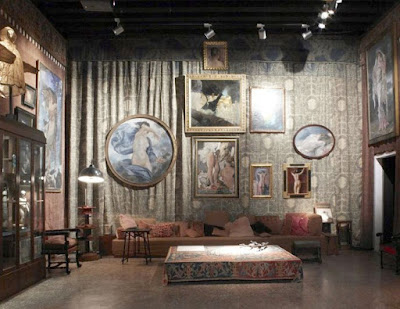

Nessun commento:
Posta un commento
Nota. Solo i membri di questo blog possono postare un commento.